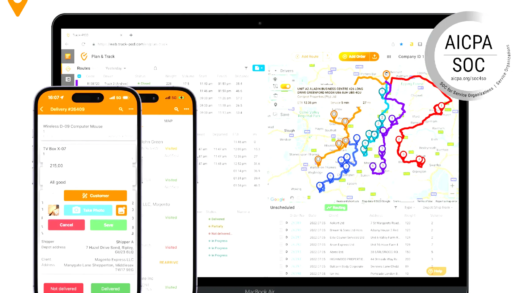This comprehensive guide covers all essential steps for selling your car, from preparing it for sale to finalizing the transaction. Key points include pricing strategies, necessary documents, effective marketing, and precautions against scams. By following this guide, you can navigate the car selling process confidently and safely.
Getting Started: What to Do Before Selling Your Car
Selling a car can feel overwhelming, but the first step is clear: get organized. Start by gathering all necessary documents related to your vehicle. This includes the title, registration, and maintenance records. Having these documents handy will streamline the selling process and build trust with potential buyers.
Next, assess your vehicle’s condition. Consider both the mechanical and cosmetic aspects. A clean car inside and out can significantly enhance its appeal. If needed, invest in minor repairs or a thorough cleaning. This effort can lead to a better sale price.
Additionally, research the market to understand the demand for your car model. Check online marketplaces and local listings to gauge how similar vehicles are priced. This research will give you a competitive edge and help you set a realistic price.
Pricing Your Ride: How to Determine the Right Price for Your Car
Pricing your car correctly is crucial to attracting buyers. Start by using resources like Kelley Blue Book or Edmunds to get an estimated value based on your car’s make, model, year, mileage, and condition. This gives you a baseline for setting your price.
Consider additional factors that might affect your car’s value, such as recent repairs or upgrades. If you’ve installed new tires or a premium sound system, mention these when marketing your vehicle. Be prepared to negotiate, but have a firm minimum price in mind to avoid underselling.
Lastly, keep an eye on seasonal trends. Certain models may sell better at different times of the year. For instance, convertibles are often in higher demand during warmer months. Use this knowledge to time your sale effectively.
Preparing Your Car: Essential Steps to Get Ready for Sale
Preparation is key to making your car appealing to buyers. Begin with a thorough cleaning—both inside and out. Remove personal items, vacuum the upholstery, and wash the exterior. Consider detailing the car for a professional finish, which can significantly increase its marketability.
Next, ensure all maintenance is up to date. Change the oil, check the brakes, and top off fluids. A well-maintained car reassures buyers that they are making a sound investment. Keep records of all maintenance to provide transparency.
Finally, take quality photos for your listing. Capture the car from various angles, including close-ups of the interior and any notable features. Good visuals can make your advertisement stand out in a crowded market.
Paperwork Matters: Documents You Need to Sell Your Car
When it comes to selling a car, having the right paperwork is essential. First, you need the vehicle title, which proves your ownership. Without it, you can’t transfer ownership to the buyer. If you still owe money on the car, contact your lender to understand the process for obtaining the title once the loan is paid off.
Next, gather the registration documents. These indicate that your vehicle is legally registered and show the car’s identification number (VIN). You should also prepare maintenance records, which can reassure potential buyers about the car’s condition. Showing that you’ve regularly serviced the vehicle can justify your asking price.
- Title of the car
- Current registration
- Maintenance records
- Bill of sale (optional but recommended)
- Release of liability form
Lastly, check if your state requires any specific forms for the sale. Completing these documents accurately ensures a smooth transaction and protects you from future liabilities.
Marketing Magic: Effective Strategies for Selling Your Car
Selling a car requires effective marketing strategies to attract potential buyers. Start by creating an engaging advertisement that highlights your car’s best features. Use clear, high-quality photos to showcase your vehicle from various angles. A well-lit image can make your car look more appealing.
In your ad, include essential details such as the make, model, year, mileage, and any special features or upgrades. Don’t forget to mention if the car has a clean title or if it’s been well-maintained. This transparency can help build trust with buyers.
- Use social media platforms to reach a wider audience.
- Consider local classifieds and community boards.
- List your car on popular marketplaces like Craigslist, Autotrader, or Facebook Marketplace.
Additionally, engage with interested buyers promptly and professionally. Answer their questions and be ready to negotiate. A good rapport can make the difference between a sale and a missed opportunity.
Where to Sell: The Best Platforms for Selling Your Car
Choosing the right platform to sell your car is crucial for reaching potential buyers. Online marketplaces are popular due to their wide audience. Websites like Autotrader and Cars.com specialize in vehicle sales and can connect you with serious buyers.
Social media platforms also provide excellent opportunities. Facebook Marketplace allows you to list your car locally, making it easier for buyers to view and test drive it. Additionally, community groups on Facebook can help spread the word.
- Autotrader
- Craigslist
- Facebook Marketplace
- eBay Motors
Consider local car-selling apps, which can simplify the process. Research each platform’s fees and user base to determine which is best for your needs. By selecting the right outlet, you can maximize your chances of a successful sale.
Scam Alert: Common Car Selling Scams to Watch Out For
Selling a car can expose you to various scams. One common scam involves buyers requesting to pay with a check that later bounces. Always ask for cash or a verified payment method to avoid this issue. Another scam to be aware of is the “overpayment scam,” where a buyer offers more than your asking price and asks for a refund of the difference. This tactic can lead to significant financial loss if the original payment turns out to be fraudulent.
Fake buyer identities are also prevalent. Scammers might create fake profiles on selling platforms to lure you into revealing personal information. Always verify the identity of potential buyers before sharing sensitive details. Be cautious if someone seems overly eager to buy without asking questions about the car’s condition.
- Beware of checks that bounce.
- Watch for overpayment scams.
- Verify buyer identities.
Safety First: Protecting Yourself from Car Selling Scams
To safeguard yourself from scams while selling your car, follow these essential tips. Always meet potential buyers in a public location, ideally during daylight hours. This reduces the risk of encountering dishonest individuals. Bring a friend or family member along for added safety. They can help you assess the buyer’s intentions and provide support if needed.
When showing your car, keep your personal information private. Avoid sharing your home address or any financial details until you have a confirmed buyer. Use a secure method for payment, such as cash or a bank transfer, and verify the funds before handing over the keys.
- Meet in public places.
- Keep personal information private.
- Verify payment before finalizing the sale.
Test Drive Tips: What to Do When a Buyer Wants to Test Drive
Allowing a potential buyer to test drive your car is a standard part of the selling process. However, it’s important to take precautions. Before the test drive, ask for the buyer’s driver’s license and make a copy. This ensures you have their information in case of any issues.
During the test drive, accompany the buyer if possible. This not only protects your car but also allows you to answer any questions they may have while driving. Set boundaries for the test drive route to ensure it remains manageable and safe. Limit the distance and duration to avoid any potential problems.
- Ask for a driver’s license and make a copy.
- Accompany the buyer on the test drive.
- Limit the distance and duration of the drive.
Closing the Deal: Finalizing the Sale Once You Have a Buyer
Finalizing the sale is the last step in the car-selling process. Once you have agreed on a price, it’s time to prepare the necessary documents. Ensure both you and the buyer sign the bill of sale, which serves as proof of the transaction. This document should include details such as the purchase price, vehicle identification number (VIN), and both parties’ information.
Next, transfer the title of the vehicle to the buyer. Depending on your state, this may require additional forms. Make sure the buyer is aware of any local regulations regarding vehicle registration. Once everything is signed, ensure you remove your personal belongings and cancel your insurance on the vehicle.
- Sign the bill of sale.
- Transfer the title properly.
- Cancel your insurance on the sold car.





Comments are closed.